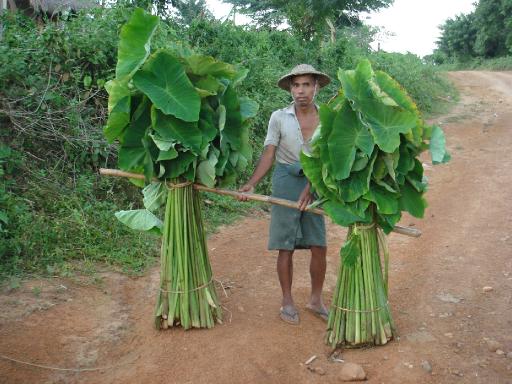
Recently Rated:
Stats
Work interests: Crop Wild Relatives (CWR), plant domestication, crop history, biodiversity, ethnobotany
Affiliation/website: National Museum of Ethnology, Osaka, Japan
Preferred contact method: Any
Preferred contact language(s): English, German
Contact: Dr Peter J. Matthews, Project Leader: pjm [at] minpaku [dot] ac [dot] jp
Favourite publications:
Category: Literature
Today I received a link to a new a newly published story in National Geographic magazine.
Title: "How taro is eaten around the world" (11th July, 2023; 7 minute read)
The author, Abigail Bassett (an independent journalist and writer based in California) sent me this note:
"Thanks again for your time a few weeks ago for my story on Taro. The piece is now live on National Geographic, here.
Below: White heron feeding on wildlife in a rice pond next to taro (PJM: Kyoto 13th. July 2023). Taro/rice pondfields in Japan still support some snails, frogs and small fish, though much biodiversity has been lost with the intensive use of herbicides and pesticides. In Southeast Asia, the cultivated wetlands are still a source of many wild foods (including fish and edible wild taros that are cooked and eaten together).

Updated: 26th June 2020.
Our project requires the integration of literature across many disciplines.
One way to do this efficiently may be to make the process of literature research public, using the topic focus forums of the Research Cooperative.
Here is my first example. I will add others as time permits:
TOPIC: Gesonula, the taro grasshopper
TOPIC: International Society for Tropical Root Crops (ISTRC ). After many years of limited availability, all the past conference volumes are now available for free, online, at the Society website. This a great trove of work on many root crops, including taro.
See: http://www.istrc.org/symposia/
Photo: servings of small taro "child corms" ( ko-imo , two per dish) in the lunchroom of the National Museum of Ethnology, Japan.
